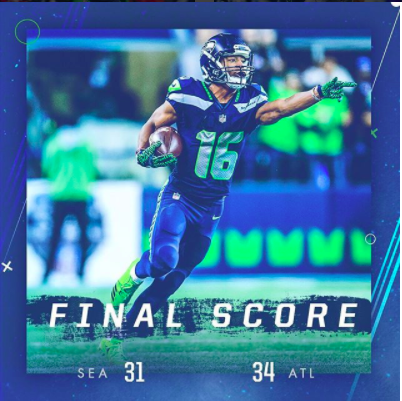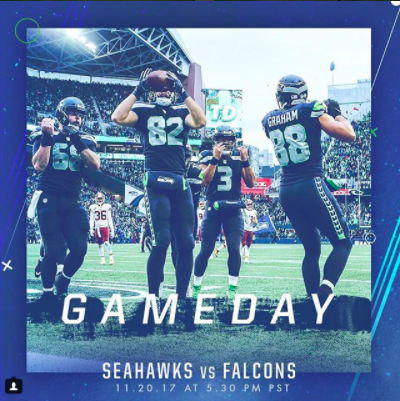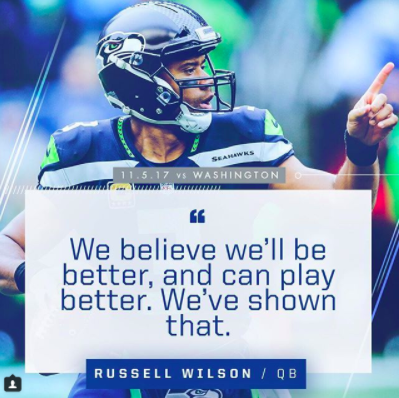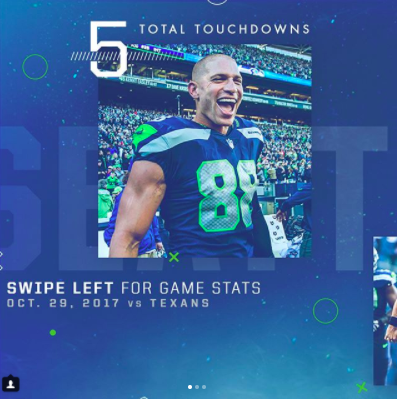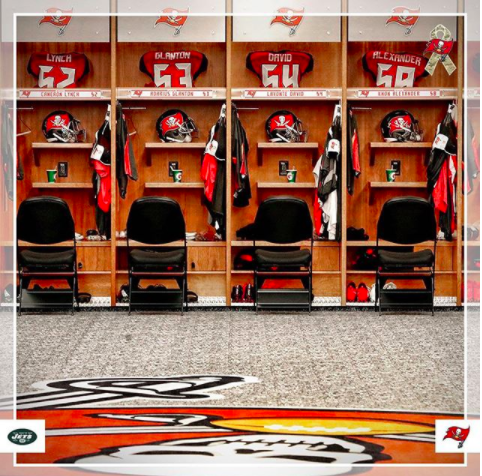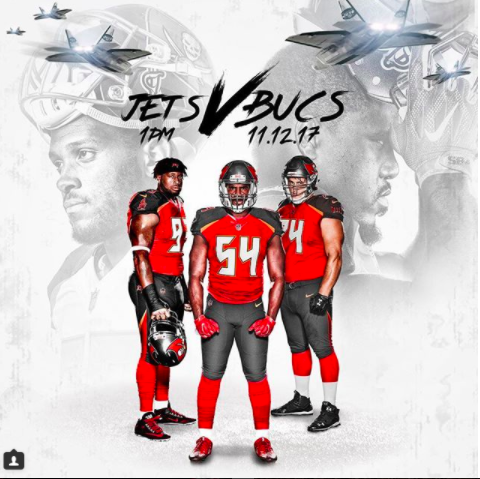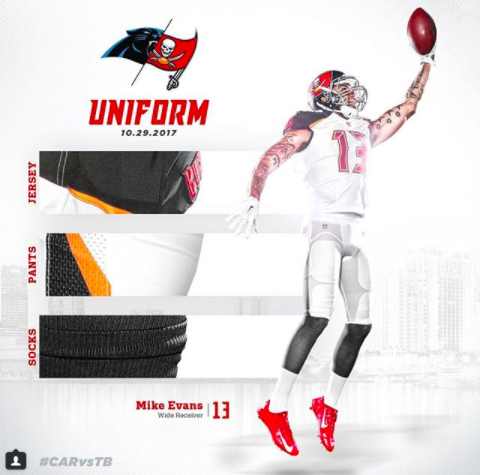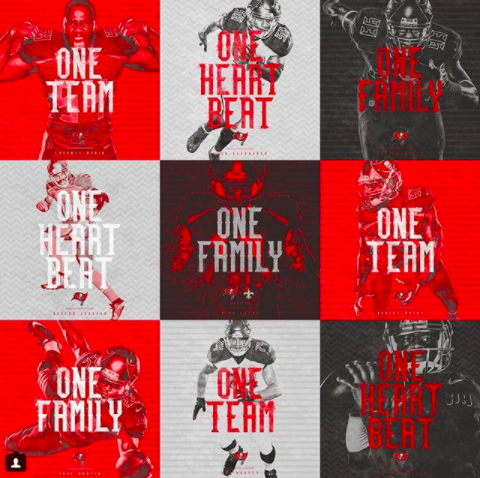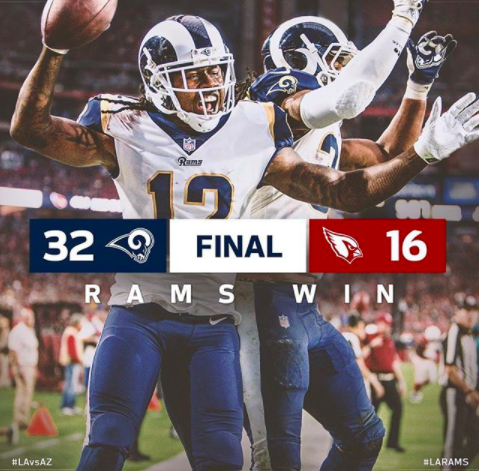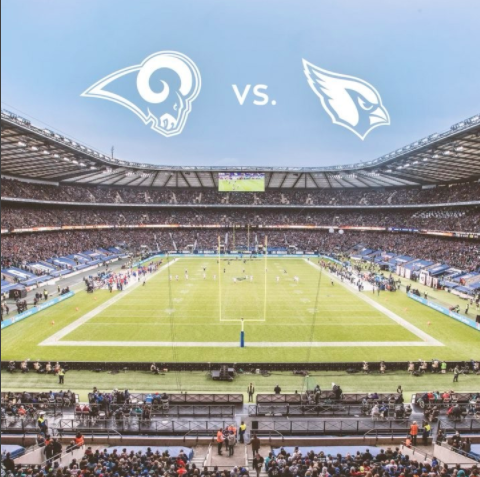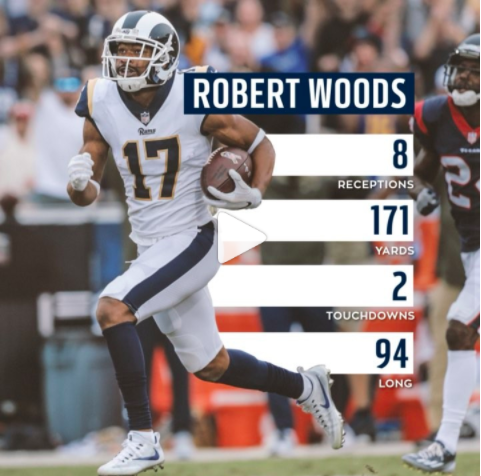Most of the time with this blog I prefer to celebrate the wins and focus on the amazing work in this industry. Occasionally though, it’s good to consider the other side. What can we do better? Or, what should we avoid completely? Guardrails of what NOT to do are a strong and helpful guide.
This post focuses on that. It’s a list of things NOT to do in social media and sports, or at the very least, things to consider. Some of these points are tactical and some of them are philosophical, but I hope it makes you step back and give some reflection.
So, without further ado, here’s a list of things NOT to do with help from some Twitter friends.
1 – Do not give into the FOMO.
It’s a bit of a running joke now, but I’m on a serious mission to #StopTheFomo. Ever since Oreo dunked the dark, brands have been forcing their way into conversations. They’re willing to discount their brand voice, visual identity and even alienate their core audience all for vanity metrics. Too many teams, leagues and brands jump into every holiday for the sake of doing so and add clutter to the space.
I'm thoroughly against tweeting memes, or whatever the "international _____ day" is unless the concept comes to me IMMEDIATELY and makes sense with our brand.
— Matt Demers 🍵 (@MattDemers) June 5, 2018
Holiday and calendar posts, especially when there is not a strong tie in or creative direction.
— Haynes (@haynes) June 5, 2018
All about the staying out of irrelevant conversations these days. If you don't have an authentic & unique way to involve your brand – stay away ✋ You just come off looking a bit cheap and desperate…
— Jenessa Gladstone (@JenessaLei) June 5, 2018
I understand real-time moments are important and that teams and leagues won’t forever be silent on holidays. I’m not saying teams should never activate. But, it’s imperative to understand why you’re joining the conversation. Is the holiday or trending topic relevant to your brand? Do you have an original spin? Is the content or idea that is fresh, new and something only your brand can own? If the answer is no, then you’re just giving into the FOMO (don’t!).
The beauty of working in sports is we don’t have to resort to gimmicks to capture attention. The stories we have access to of the team, history, fans and excitement are better than any flavor of the day. People already have an intense emotional connection to our brands. Take advantage of it.
If you’re interested more in this topic, here’s a little bit of a deeper dive into it.
2 – Do not get caught up in video length.
There is always talk in the industry around best practices for video length. And often, this focus is detrimental to creative. We don’t have a length issue. We have a quality issue.
We need to focus less on long-form vs short-form and more on actual concepts. What’s the story we’re trying to tell? And, how can we execute in a way that portrays it best? Both long form and short form have their place. Focus on the best ways to deliver the idea/message, entertain fans and create something people care about. The rest will take care of its self.
One note: I do understand there are some platform best practices where certain lengths perform best. When this is the case, you might have to splice, dice and package your content a little differently. The point is it’s not about exact length but more about the actual idea.
3 – Do not formats an behavior.
With the launch of IGTV, this is a good time to remind ourselves that we should not try to force formats and behavior. IGTV was created with mobile-first in mind. It’s for vertical video consumption, period. The moment we try to force horizontal on the platform the moment we will lose credibility with our fans/consumer.
This industry is all about evolution. Change is hard, yes, and we might not personally like the way things shift at times. As marketers though, our job isn’t to force consumer behavior that isn’t there. Our job is to understand consumer behavior and go with it. Forcing formats and consumer behavior is a battle you won’t win. Go with the changing tide. When brands and teams pivot they create a better experience for fans. It’s a win.
4- – Do not cross-promote lazily.
If you want to drive your audience from one platform to another, you have to do it right. People don’t jump ship without a real reason for doing so. As a result, it’s about more than simply pushing a link. It takes creative energy.
A critical component to creative strategy today is thinking about how we package content. How do we make an idea/piece fit each platform? How do we tease a launch of a series? How do we make people want to watch, consume or go elsewhere? It’s not easy to capture even three seconds of attention today and it’s certainly not easy to convince people to leave a platform where they prefer to play.
Whether you are trying to drive people to your website or a new podcast, you have to be creative and give people a reason to care. And, when they get there, you better deliver something that is engaging.
Below are a few examples of good cross promotion. Don’t waste output on something that’s not going to do the job. Drive people to go elsewhere through a strong tease and good content.
Building the Browns is headed to Facebook Watch!
Watch full episodes and extended behind-the-scenes director's cuts all season long » https://t.co/vaermwLmQC
More info » https://t.co/X5xEAIzq6w https://t.co/p36vVpyphl
— Cleveland Browns (@Browns) April 3, 2018
This is one of the best cross-promotion plays of a @facebook Messenger bot I've seen. Driving people there through good content. pic.twitter.com/FQPj7npcRS
— Jess Smith (@WarJessEagle) August 23, 2017
All about the staying out of irrelevant conversations these days. If you don't have an authentic & unique way to involve your brand – stay away ✋ You just come off looking a bit cheap and desperate…
— Jenessa Gladstone (@JenessaLei) June 5, 2018
5 – Do not over retweet.
People follow accounts to hear from that team, brand, etc. They aren’t looking for a feed that’s simply curating another perspective. Lynnea says it best below … own your message:
Don’t over retweet.
Your brand has an account for a reason. Own your message (which includes being part of conversations with appropriate mentions & hashtags).
— Lynnea Phillips (@LynneaPhillips) June 5, 2018
Sometimes, accounts take the approach to retweet as a way to reward fans. Here is a good rule of thumb though: Reply to acknowledge and retweet to add value. If you’re retweeting something, it should add value to the entire audience.
In addition to retweeting, it’s also important to not abuse the quote tweet:
Quote tweets for me. Engagement killers and too often don't actually add to the tweet being quoted.
— Travis Miller (@AtTravisMiller) June 5, 2018
The bottom line of this: Every action you take, whether it’s a retweet or a quote tweet should add value to your entire audience. Don’t abuse these two tactics as a way to reward fans (that’s what replies are for).
6 – Do not focus on pop culture GIFS.
Repeat after me: Brand GIFS trump pop culture GIFS any day. Don’t take my word for it though, take the word of some Twitter friends:
Late to this party, but for me it’s using a “pop culture” GIF from a brand account. Missing an opportunity to create eye-catching content and then using a cheesy GIF is not the answer.
— Tyler Pigg (@TylerPigg_TAMU) June 6, 2018
Kind of specific but… don't (ab)use movie/tv/pop culture gifs if you have players and game action at your disposal to easily make your own on-brand gifs.
Also reiterate the #StoptheFOMO 🙂
— Val (Persinger) Webster (@Val_Webster22) June 5, 2018
My opinion, but don't use GIFs not associated with your brand or created by you. It's cheap and lazy. Save The Office GIFs for your personal account.
— Matthew Vinson (@matthewvinson) June 5, 2018
Teams, leagues and brands need to spend less time scouring GIPHY and invest more time in creating their own original content. Here’s the thing: Pop culture GIFS can alienate your audience. They also themselves to personal biases as we are more likely to share what we think is funny and clever. If you didn’t grow up in the 90s or aren’t a Stars Wars fan, then there’s a good chance you don’t get or care about the pop culture GIF. It’s all relative.
You don’t know for sure if your fans relate to Seinfeld, but you DO know that they relate to your team. Why push out content that is unoriginal and has nothing to do with your team when you can invest energy in building your own content and unique voice?
When you work in sports, you have more access to content than most brands. There’s no need to rely on others for content, even in humorous moments. Tap into existing content, leverage your designers and create epic GIFS that not only resonate with your entire audience but also help build your own, unique team voice.
7 – Do not feed into the false pressures.
Due to the public and “always on nature” of this industry, we tend to put a lot of pressures on ourselves. And often, at times, these pressures are not needed (in fact, they hurt us). We feel the pressure to be first. The pressure to constantly publish. The pressure to put our work above everything else. If you want to survive the long game in digital, both from a brand and personal perspective, you have to stop giving into to this false pressures.
Don’t obsess over the nebulous reach metrics and celebrate when something goes viral, don’t chase virality. Focus on metrics + messages that matter [not that vanity metrics are worthless] and don’t try to just game the system.
— Neil Horowitz (@njh287) June 5, 2018
Don't make your people work 24/7. Give them breaks, overhire, rotate, and be OK when you're silent.
— Tom Buchheim (@tombuchheim) June 5, 2018
Also, you can’t be afraid to be silent and pause publishing. That’s a tough one. Continuous publishing—just to keep up and be seen—is a trap.
— Haynes (@haynes) June 5, 2018
This industry is exhausting, yes. But I also believe we’ve created part of the frenzy. We need to understand the moments where we need to scramble and also understand the moments where it’s okay to not be a participant (gasp, I know). Our fans don’t really expect us to be on 24/7. They don’t really expect us to be the “first” to everything. They don’t really expect (or maybe even want us) to publish twenty times a day. These are pressures we put on ourselves; not actual expectations of fans.
If you feed into the false pressures, eventually, this industry will drive you insane. Take time to understand the big picture and what really matters. And know that it’s okay to breathe, pause and think.
8 – Do not neglect community.
Community management is probably one of the most underrated aspects of social in sports. Resources and manpower can be limited, but even setting aside five minutes a day to interact with fans can go a long way.
Only sharing content proactively as a news source. Your audience wants to be engaged. Know your tone and respond to them. Create relationships, not followers.
— Danny Christiansen (@DannyCLT) June 5, 2018
Social media is not just about pushing content. It’s about building a community and relationships. And, working in sport is a powerful platform. A reply or the opportunity to surprise and delight someone can leave a lasting impression. Simple gestures of appreciation for fans go a long way.
If you need some community management inspiration, look no further than the Rockies or Phillies. Both teams have mastered the art of being human and know how to tie the perfect line.
The guys should wear the black vests with no undershirt. Intimidation factor.
— Colorado Rockies (@Rockies) June 29, 2018
Stick with us through the ups and downs, baby!
— Colorado Rockies (@Rockies) June 29, 2018
Not much to say in response to that, but wanted you to know your voice and frustration was heard. Hang in there! 👍
— Colorado Rockies (@Rockies) June 28, 2018
OKAY fine it's a *little* toasty, but sunny and no rain is beautiful weather to us!
— Philadelphia Phillies (@Phillies) June 29, 2018
Seems foolproof.
— Philadelphia Phillies (@Phillies) June 29, 2018
people seem to like it…
— Philadelphia Phillies (@Phillies) June 25, 2018
9 – Do not throw away your brand hat.
Somewhere along the way in the quest to become digital-first, social channels became a silo. Social is often the the wild, wild west. Too often the focus is not on putting the brand in the best light, but about winning the internet.
It’s time for social media to grow up (yes, we’ve been saying this for a long time). Marketing is digital and digital is marketing, and as such, we should treat it like that. It’s time to make sure everything we do ladders back to the brand strategy – we have to put time into nailing the brand foundation.
Try to make every tweet look like a @Wendys reply.
— Danny Ciaccio (@DannyCiaccio) June 5, 2018
Copying what everyone else does for your brand. #ridiculous
— Karen Weaver (@DrKarenWeaver) June 5, 2018
Stop trying too hard to be someone you’re not. Find your voice and identity and let it define you.
— Nick Eber 🎟️ (@nicholaseber) June 5, 2018
The voice of an organization on social media should be a marketing team exercise— not just that of the social media manager. Once the voice and tone are set, it is up to the social media manager to leverage his or her creativity on the platforms, writing ability and artistic eye to shine. Creativity isn’t limited to voice and tone alone. Put your brand hat on first, and then from there, build out the rest.
I’ll leave it with this quote from the Padres social team: It’s about the team/brand, not the tweeter. Yes, yes, yes.
I asked about snark and savagery with the @Padres #smsports staff and great answers – “Are we doing this just because? Will this resonate with our fans?” Making it about the team/brand, not the tweeter. 👌🏽#SDSocialSummit
— Neil Horowitz (@njh287) June 30, 2018
10 – Do not publish for the sake of publishing.
Volume, volume, volume. We have a content volume in sports. Too often we publish on autopilot and simply check a box. It’s time to take a step back and give serious thought to content volume and distribution strategy. A less than 1 percent engagement rate should show a serious need to pivot (and no, don’t blame it on the algorithm).
It’s so easy to get caught up in the day-to-day when it comes to content distribution (especially with the adrenaline of real time). But, it’s important to take a step back and realize that we cannibalize our work when we aren’t thinking strategically about our distribution strategy. If you can pause and think about why you’re doing things and how can you package content a little bit differently, you’ll see really strong results.
We need to rid this pressure (again, the false pressure) to churn out content for the sake of doing so. We need to back off the volume if it helps us create the best work possible. We need to be bold in how we package content. And, to think about distribution differently.
Instagram, especially, is an easy example where I see too much content volume. With the addition of an algorithm, Stories and IGTV, teams and brands need to think differently than how they approached the platform before. And, for some reason, teams have not pivoted.
Over posting on Instagram. Even though it's the "hot" platform today, you must not over do it. I've seen teams post 7-10 times per day 🤦♂️ A post that shows up 2 days later in a timeline that aren't necessary (ex. score graphic) is a bad, bad look. Quality > Quantity always.
— Andrew Taylor (@andrewtaylor) June 5, 2018
To combat this, I believe content packaging is more important than ever. Instead of publishing five individual highlight posts, what if it could be packaged differently? What if after every game a team leveraged the Instagram carousel? They can highlight the “five plays of the game” and include design elements to make it unique to the brand. A few examples of how to package content differently:
Want more tips on tackling the content volume problem? Check out this post here.
11 – Do not forget about the business case.
Digital should finally have a seat at the big kid’s table. No longer about retweets and likes alone, it’s a channel where brands and teams can drive revenue and true ROI. Don’t get caught up only in the bright and shiny vanity metrics. Focus on the actual business case.
The real beauty of digital is that it does not have to be a “this or that” when it comes to driving awareness/engagement or revenue. In a sense, you can have it all. Digital allows teams to focus on the full marketing funnel. If teams invest in a sound strategy, community management, creative and paid then they can drive awareness, engage and ultimately convert. For digital to get its due, we have to focus on all of this.
If you want your organization to continue to build out the team, it’s imperative you understand the organizational priorities and the priorities of your boss. Let’s say you report into a brand person who’s really eager about fan engagement, your job is to make sure your work maps back to that. If your boss is a revenue person and they’re focused on how are we driving revenue for the business, you have to focus on that.
Spend your time investing in a strategy that matters to the organization and executing on it. And then, make sure you advocate for the work so people understand how digital is helping to drive organizational success. Our jobs are about a lot more than likes and retweets. Demonstrate that.
12 – Do not abuse sponsored post.
Sponsored content is all the rage these days, as it should be. It presents a huge opportunity to drive revenue for organizations. When done right, sponsored content is an amazing value add. But when done wrong, it is a huge disservice to the community you’ve built (and to your sponsors).
All too often sponsored social is sold like add space. We slap a logo here and there, which really doesn’t move the needle for your brand, your sponsor or your fans. Instead, the focus should be on integrating sponsor’s message with your brand in a natural way. Here are a few good examples:
It’s important to remember that the best-sponsored content provides value to the fans, the sponsor and the team. That requires a content-first approach and nailing the execution. Take the time to get the process right for coming up with concepts and pushing the creative boundaries. It’s hard work, but worth it. A few examples of sponsored content done right:
#NBAFinals @Jeep Headlight Moment:
Setting the NBA record for threes (24) in a Finals game.#OIIIIIIIO pic.twitter.com/8rRUKN9egb
— Cleveland Cavaliers (@cavs) June 14, 2017
What former shooting legend inspired @dougmcdermott to pick No. 20? Find out in our new #Knicks series My Number, pres. by @newyorklottery pic.twitter.com/hs5uLwWRsr
— NEW YORK KNICKS (@nyknicks) November 21, 2017
Primetime is where we thrive. Tonight, we aim to add another W to our dominant record since 2010. @IHOP by the numbers 🥞 https://t.co/daKfEzb8BX
— Seattle Seahawks (@Seahawks) November 9, 2017
As we continue to sell social sponsorships and the volume rises, integrating right needs to be a big priority. Invest in sponsored content, but also invest in doing it right Here are two blogs that dive deeper into the topic: Partnership Not Ad Space and Nailing the Concept.
13- Do not forget the other side of sports.
Sports are about more than scores. They are about unity, passion, community and hope. It’s our jobs to celebrate the success on the field, while also tapping into the passion of our fans, the cities we call home, our players off the field and the emotional stories. Scores are nice and all, but it’s the belief in something bigger that ties sports fans together. Don’t forget about that other side.
Everyone has “access” to cover the scores today. The other side – the heartbeat of your team, your fans, the inside access, etc. – is what makes your brand and your story unique. The other side of sports is something a team can own in a way no one else can.
https://twitter.com/garyandrews/status/1004135192905146369
I assume you’ve got FOMO covered, so I’ll go with “excessive play-by-play”. Looking forward to reading it!
— Drew Kingsley (@dmk1122) June 5, 2018
Accounts that literally just tweet out the score updates
— Josh (@KoopsNet) June 5, 2018
The scores are easy to tell. It’s everything else we have to make a conscious effort on. And, a content strategy can help you identify the priorities for the organization (info on how to start one here). Lay the foundation on what you’re looking to accomplish and then tackle the content ideas that go well beyond the scores.
We’re in the business of understanding people. Our job is to evoke something in people. Make them laugh, cry, cheer or even question. Emotion is the most valuable tool we have, so go beyond the scores. Emotion always wins, my friends.
Need inspiration? Here’s a great example from the Panthers of going beyond the scores and tapping into emotion.
It was supposed to be a normal day for @run__cmc and his friends. But it turned into a rescue mission.
[Part 1] pic.twitter.com/j1n1uVJ6Rb
— Carolina Panthers (@Panthers) June 27, 2018
14 – Do not #hasthag aimlessly.
Hashtags are a tool in the toolbox and not a foundation for an entire social media presence or campaign. Yet over and over again we see them get tossed around, misused and abused. The hashtag madness has to stop.
If you’re going to use a hashtag, you need to understand its purpose. Are you trying to curate community and a conversation? Are you asking fans to enter something? Make sure the purpose and CTA are simple and clear. And, from a brand perspective, be consistent.
Pet peeve! Hahah. I have another one too.
Keep the branding on point. I’ve seen schools consistently be the only ones to use (multiple) hashtags. Don’t let your brand lose its meaning. If you’re the only one using the hashtag try something else.
— Lynnea Phillips (@LynneaPhillips) June 5, 2018
15 – Other awesome insights from Twitter friends.
Here are some more strong thoughts from the #smsports community on what not to do. Be sure to share yours in the comments below too.
https://twitter.com/EricSan/status/1014177481354555393
Be inconsistent. If you're going to engage with your fans on various platforms, stick to it. It's better to do a few things really well, than a bunch of things and just get by. #SMSports
— April Whitzman (@Alleycat17) June 5, 2018
Text only tweets.
I understand at times the social team/managers may be following orders above but find a way to incorporate a link, video or image/graphic.
— Johnny Volk (@JohnnyVolk) June 5, 2018
Adding black bars to social videos to make them cinematic
If you're posting something 16:9 it's already taking up less screen real estate on mobile than 1:1…adding black bars only makes this worse
— Rhodri Williams (@TheRealRhodri) June 5, 2018
This isn’t something from a team perspective, but I hate when leagues or commentators/whoever reposts a video/pic but doesn’t quote tweet. When they save our video and repost it so we don’t get the engagements on our native content. Not cool 🙅🏽♀️
— Anastasia ☼ (@xoxAMM) June 5, 2018
Copying what everyone else does for your brand. #ridiculous
— Karen Weaver (@DrKarenWeaver) June 5, 2018
What’s on your list of what not do? Share your thoughts in the comments below.
